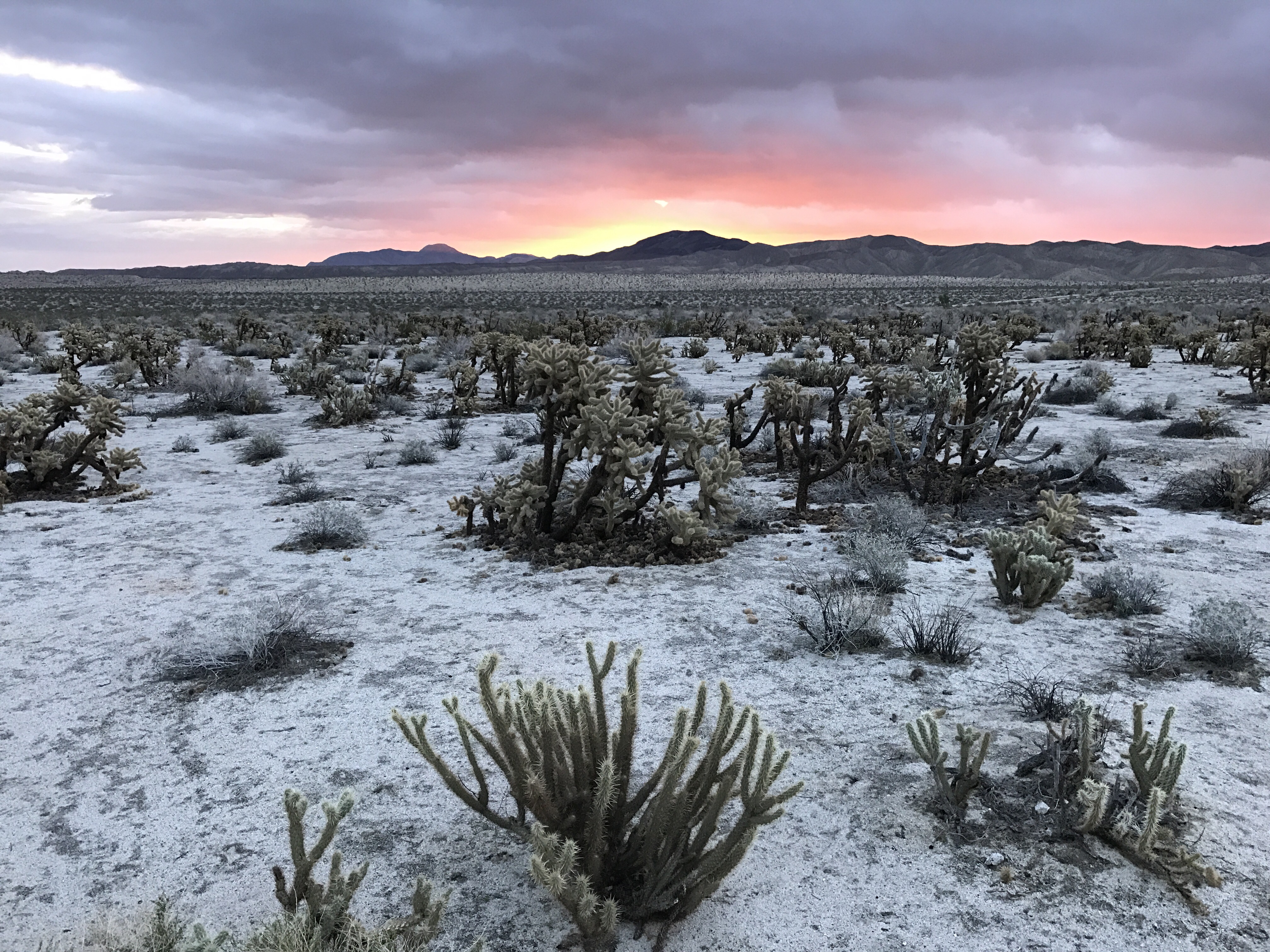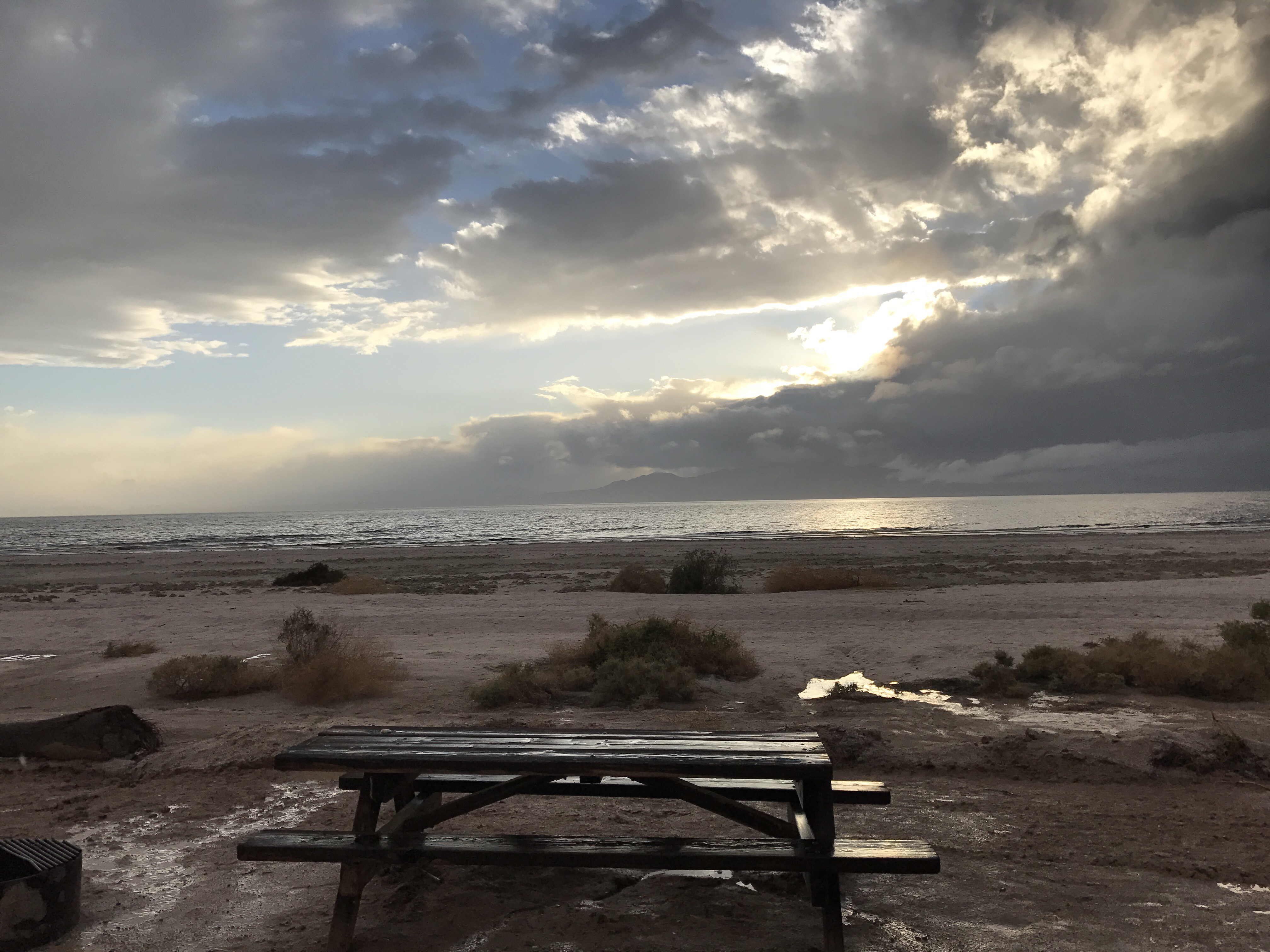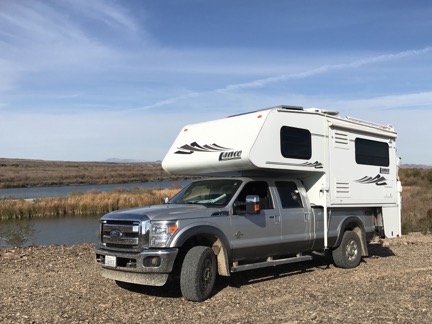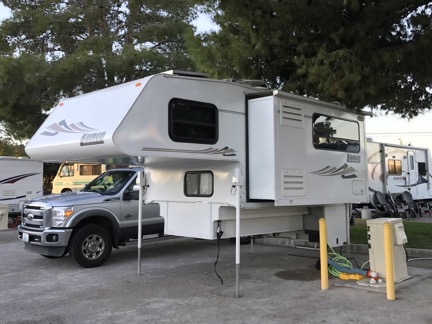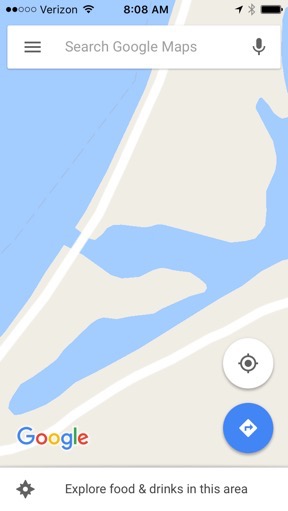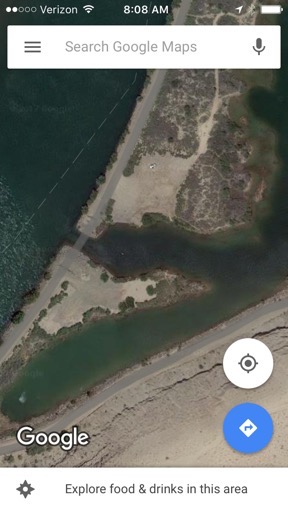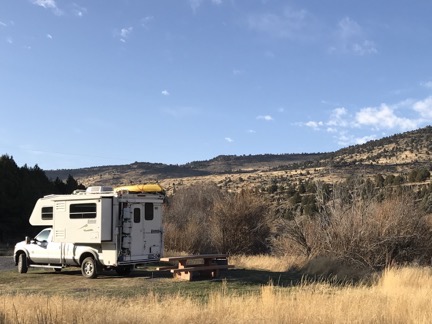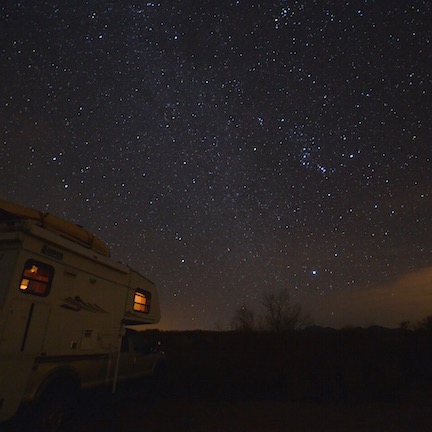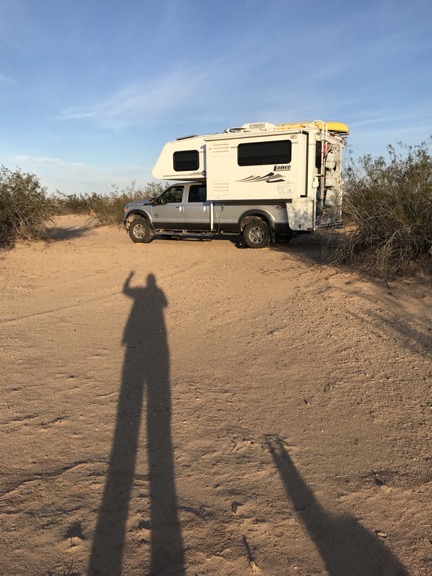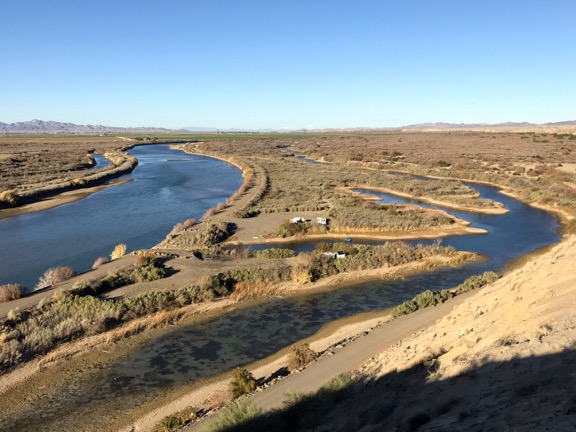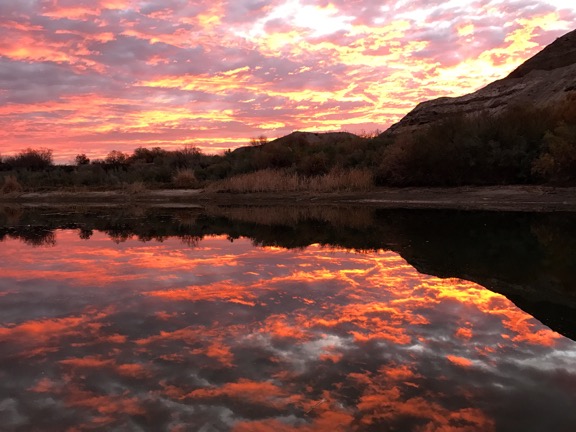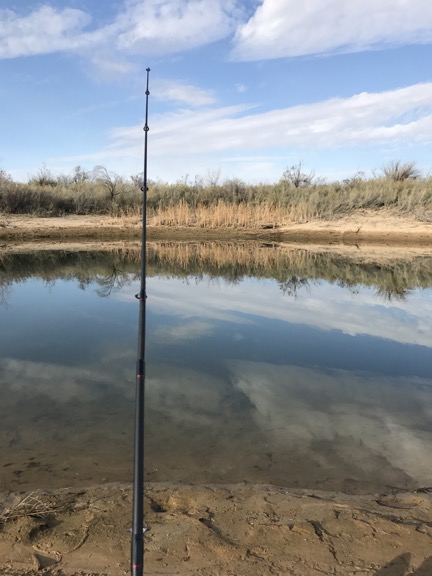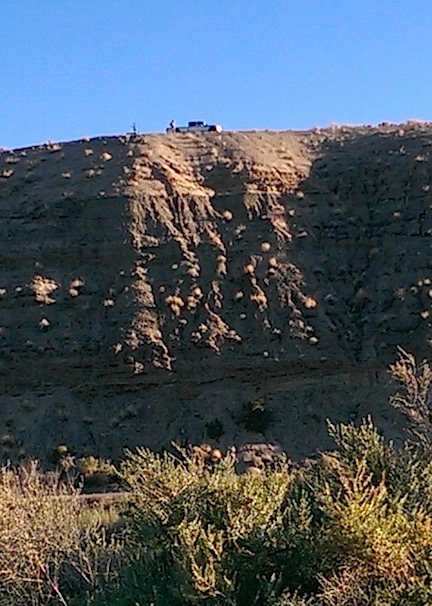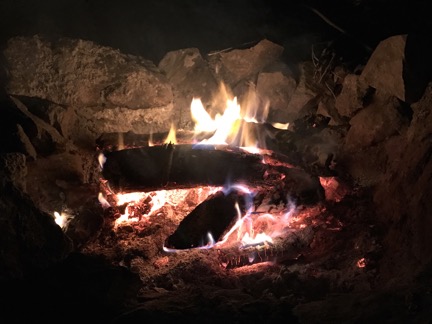With a note about why loneliness doesn’t exist for people who don’t need the company of others.
On Friday afternoon, I took a right turn off a two-lane road in San Bernardino County, California. A historical marker indicated that I’d found the “Harry Wade Exit Route,” a route a man and his family had taken to escape a particularly deadly desert valley in 1849.
Thus I began a long trek down a series of washboarded single-lane roads into the Mohave Desert. I was on a quest to visit some sand dunes in the farthest reaches of a National Park that gets nearly a million visitors a year but there wasn’t a single vehicle on the road with me. After bumping along on one road and then making a right turn onto another, the only indication I had that I’d entered the park was a weathered sign with the park name followed by a similarly weathered sign warning that off-road travel was prohibited.

My map of the area was very detailed.
I crossed a few dry washes, recalling quite clearly that my detailed map warned “River crossing dangerous in flood.” I had seen water flowing earlier in the day and suspected the meandering river might enter the valley, but it certainly didn’t seem as if the water had made it this far. Until a healthy stream trickled across the road a few hundred yards ahead. Surely my big pickup with its beefy tires could cross this sandy stream? Even with my big camper on back? I knew that a slow crossing was not advised, so I gave it a bit more gas and surged forward. The tires started to bog down on the far side of the stream, but by then momentum had carried us through. On the way back, I’d use 4WD.

This was supposed to be a photo of the ponds by the springs but it’s a better picture of the dreary weather. Apparently, it was pouring in the main park area.
I followed signs to a spring where another sign that I suspected might be there said “No Camping.” There were no people in the parking area, although there was a weather station that I later found on Weather Underground. I never saw the source of the spring, but I did see the huge reed-fringed ponds that had formed in a desert well-known for its lack of water. I heard water fowl and frogs and, after retrieving my binoculars from the camper, saw a few dark colored birds floating on one of the ponds. I also saw what I think was burro (AKA donkey) dung along the trail.
I was tempted to park there for the night despite the sign, but didn’t want to get in trouble in the unlikely event of a park ranger stopping by this remote spot during the night. My camper is pretty much zero-impact; it’s fully equipped to haul what I need — fresh water, fuel for cooking, food — in and what I don’t need — waste water and garbage — out. A campfire isn’t necessary for cooking. All I need is a relatively level place to park, preferably with a view. But rules are not meant to be broken and if this spot wasn’t protected by the “No Camping” rule, it would likely be overrun with motorhomes and people bathing in the springs as soon as word got out about what a great spot it was.
We are our own worst enemies.
The goal, I reminded myself, was the dunes. It would be better if I could find a place closer to them to park for the night. Although the weather was degrading and rain was in the forecast, a hike to the dunes from my campsite was a possibility, either that evening or in the morning. So I came away from the spring and turned left on the washboard road, continuing north and mindful of the sign that warned about deep sand 4 miles up the road. I didn’t plan on going that far.
I found what I think was a parking area for the dunes about a mile up the road and turned in. There was a sign about it being a wilderness area that allowed foot and horse traffic only. There was space between the sign and the road for my rig, so I pulled out, turned around, and backed in with my camper’s back door facing the dunes. I killed the engine, fetched a few things from the truck, and opened up the camper. After spending about 10 minutes putting out the slide and picking up the things that had fallen during the bumpy ride, I was settled in.
The dunes, over a mile away without a clear trail to them, taunted me under a darkening sky.
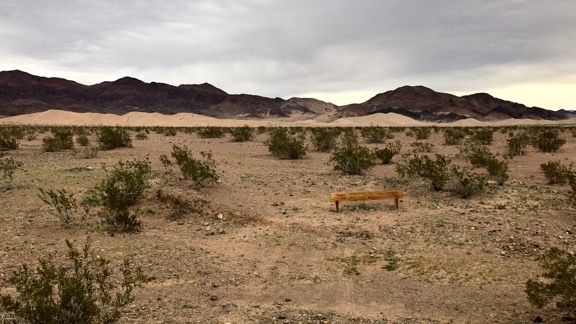
Parking for the dunes — the view out my camper’s back door.
I fed Penny.
I checked my cell phone, fully expecting to see No Service in the area where there are usually dots representing signal strength. I was shocked to see three dots and LTE. That had to be wrong. I ran SpeedTest and was even more shocked to see that not only did I have Internet service, but it was the fastest service I’d had since leaving home.
I checked in on social media. I admit that part of me wished I didn’t have an Internet connection so that I could fully disconnect. But, at the same time, I’m a realist and know that if anything goes wrong, it’s nice to be able to call for help — even if help would likely take hours to find me. (My dead starter was still fresh in my mind, which also explains why I always back into a campsite now.)
I found a classic rock station on the radio that actually played good music. I listened for about 15 minutes before realizing I preferred silence.
And it was silent. No sound of cars or trucks or planes. I could hear the wind coming through the greasewood (AKA creosote) bushes before it reached me. I occasionally heard a bird.
From my parking spot, I could see for miles in almost every direction; nothing moved.
I looked again with my binoculars. Nothing.
I sat at the table, writing a blog post on my laptop (that I might never publish), finishing the last of the ice tea from my late breakfast in Boulder City. Occasionally, I’d glance outside to see if Mother Nature would surprise me with a ray of sunshine highlighting the dunes or mountains behind them. I heard a few raindrops on the roof. It got dark out without the pleasure of a nice sunset.
Despite the full moon that had risen behind the clouds at around sunset, it got very dark.
I made some dinner and sat up in bed eating it while I did a crossword puzzle. I debated watching a movie but decided against it.
I realized I was exhausted. I’d started the day with a 4-1/2 mile hike on the Historic Railroad Trail near Hoover Dam, which would have been nothing if I was still in shape. But I’d been letting exercise opportunities pass me by and it was starting to really make a difference. Which is why I’d done the hike.
So I went to bed early.
As I slept, I was very aware of the persistent rain on the roof. I thought about that little stream I’d crossed and wondered whether it would be a bigger stream.
Later, I was also aware of the wind loudly snapping the ratchet tie-down strap holding my old rotor blades in place on the roof. There was no way to stop the sound without going outside and climbing a ladder, so I tried to ignore it. Eventually, the wind — and the noise — stopped.
I slept well after that, waking enough just a few times to notice that it wasn’t dark anymore. The clouds had thinned enough to bathe the desert around me in faint moonlight.
I’d slept until after 5:30 AM, which was actually quite late for me.
No surprise that it was dead quiet when I woke up. It was still cloudy. The sky was brightening from the coming sunrise. The dunes taunted me.
I had some coffee and breakfast, fed Penny again, and caught up on social media. The world is going nuts, but you don’t really feel it when you’re disconnected. Sadly, I was not disconnected and can feel it. It makes me sad.
I looked out at the dunes. It wasn’t worth the mile plus walk to get out there with bad light and I definitely didn’t want to spend the day out there waiting for the light to get good.
But I didn’t mind waiting in my camper for the light to get good. There was no place else I had to be. Heck, I had enough food, water, and fuel to last me at least a week and didn’t need to be at my next destination, which was only 536 miles away for six days.
And I really liked the solitude of this roadside campsite in the middle of nowhere.
So I pulled out my portable solar panels and set them up on the south side of the camper. There was enough blue sky that I knew they’d eventually generate some power. I certainly didn’t want to run my generator and break the silence.
And that’s how I spent the day: writing, relaxing, reading, and shooting the occasional photo.
A park ranger stopped by around 10 AM. We chatted for a while and he gave me some advice about road closures and campsites over the next few days of my stay in the park. A while later, two guys in a pickup stopped, wanting to know what the road was like up ahead. I told them I didn’t know, but mentioned the deep sand sign, which they’d also seen. I told them not to get stuck because I didn’t want to pull them out. We laughed.
Much later in the day, two SUVs parked near me and two men and a woman got out. By then the wind was really howling and visibility had dropped due to blowing dust. It was also cloudy and threatened rain. They told me they’d been much farther north in the park and it had poured on them all day. I asked them if they were going to hike to the dunes and they said that they’d come this far so they had to go all the way. I watched them bundle up against the wind — the temperature had dropped to the 60s — and head northeast. It rained while they were gone, but not enough to make anything wet. Around sunset, when they still hadn’t returned, I took out my binoculars and saw them at the base of one of the dunes. I guess they were doing some photography; it was too far away to really tell. I wondered if they’d taken camping gear with them; I hadn’t really paid attention to their departure.
A few other pickups and SUVs drove by but didn’t stop. It was actually a lot more activity than I expected.
The sun finally made an afternoon appearance about a half hour before sunset, illuminating the dunes and the mountains behind them and making deep shadows. It was too late to walk out there — and besides, the wind was still blowing pretty good — so I satisfied my urge to document the moment using my 70-300mm lens from the roof of the camper. The light was constantly changing and I took quite a few photos. The one below, which I obviously cropped, is one of my favorites.
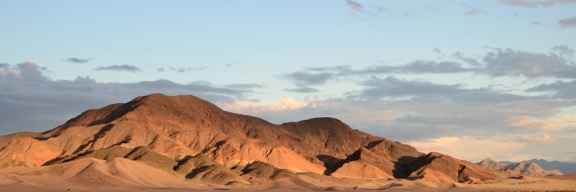
Sunset at the dunes.
When the sunset show was over, I started making dinner: chicken cordon bleu with fresh creamed spinach and chanterelle mushrooms (from the freezer). It got dark quickly. I kept checking out the back windows for the moonrise, which was expected just north of due west at about 6:30. There were clouds out there on the horizon and I wondered it they’d clear out enough for me the see the moon coming over the mountains. Overhead, stars started appearing one-by-one with Venus leading the way.
My dinner was almost ready and it was dark when the sand dune hikers returned. I turned on one of my outside lights for them. Soon their engines were running and I saw taillights down the road. I didn’t envy their drive back to pavement in the dark.
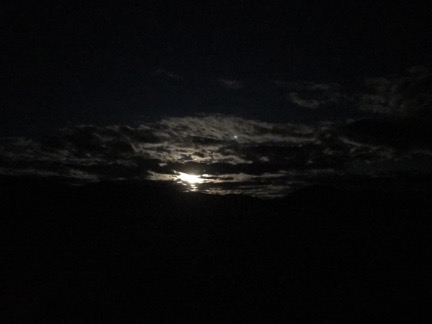
Moon rise through the clouds.
My friend Bob called and we chatted for a while. It had snowed quite a bit at home and he’d spent the weekend in his shop, working on a Moto Guzzi motorcycle he’d owned for more than 20 years, getting it back into pristine condition. Unfortunately, the work he needed to do on the engine required him to keep the door open to the cold so he wouldn’t be overcome with fumes. While we talked, the moon rose just where I expected it to, making the clouds around it glow. Overhead, the stars faded away, unable to compete with the moon’s brightness.
I went to bed with a book I’d downloaded from the library, Time and Again by Jack Finney. I originally read it not long after it was first published in 1970 and it seemed brand new to me. I recommend it.
I slept great until about midnight, then woke for a while, then slept again until after 6:30. The sound of rain that was nearly forecasted nor on radar got me out of bed. It was overcast (again).
Outside, the dunes taunted me.
The hourly forecast said it would clear up around 10 AM. It would be my last chance to hike to the dunes; I really did need to get on my way if I wanted to see other remote parts of the park. So, after coffee and breakfast, I did the dishes and dressed, getting the camper prepped as much as I could for departure. The sun finally made an appearance as the clouds fled west, faster than the sun could climb into the sky.
Two pickups drove by. I started wondering why vehicles nearly always came by in pairs.
It was just after 9 AM when I started my hike to the dunes. Although satellite images had shown the remnants of a road that went that way, I couldn’t find it. So I just cut as straight as I could through the desert. Halfway there, I stripped off my flannel shirt and faced the sun in a tank top. The shade temperature was below 60°F, but I was not in the shade. The sun felt amazing on my skin and the light breeze kept me cool.
I looked back every once in a while. Although I thought the route was pretty flat, we apparently descended into a dip; I couldn’t see the camper when we were about halfway to the dunes. I later saw it again and made a note of the knob on the mountaintop behind it so I could easily navigate back in the unlikely event that my phone’s GPS tracker failed and I couldn’t see my rig.
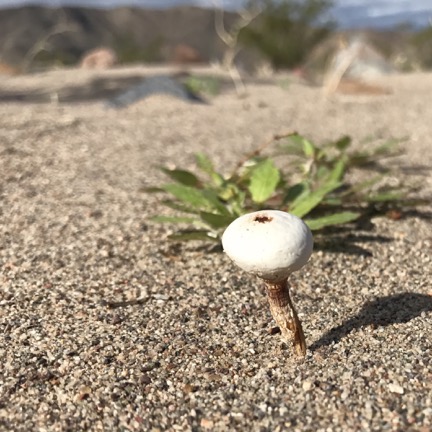
I saw three of these within a half mile radius of each other. They were about an inch and a half tall.
The walk took about a half hour, with stops along the way to look at interesting plants, including mushrooms (!), and rocks.
The dunes are large and I felt small beside them. Penny went nuts running up and down the sand. She loves the beach and I suspect that to her, there was nothing better than a beach without water.
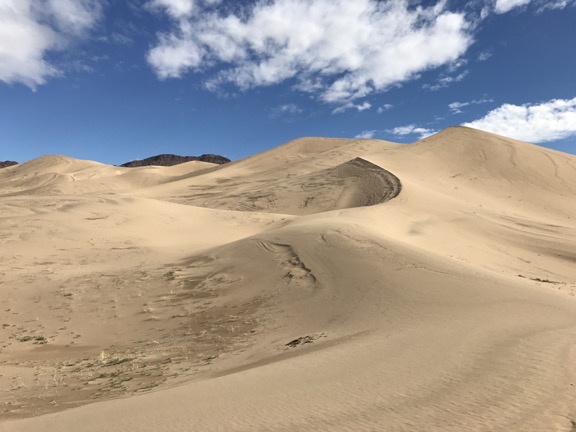
A closeup shot of part of the dunes.
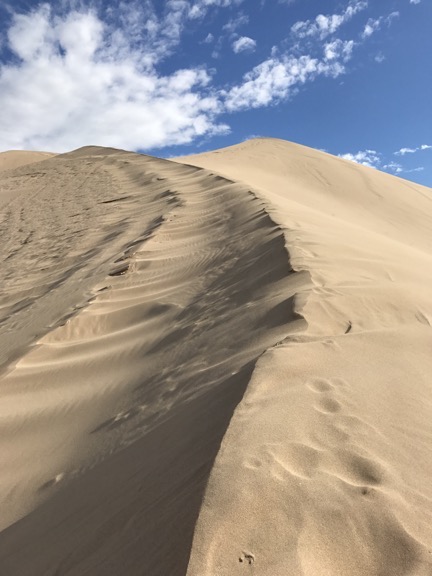
I didn’t get very far trying to climb up this ridge.
I took a bunch of photos. Unfortunately, although I might have been in the right place, I was definitely not there at the right time. The dunes were in full sun and the golden hour was long gone. Shadows were relatively small. The light was bright and harsh. A more serious photographer would have arrived at dawn — and gotten rained on along the way.
I tried to climb one of the ridges, but when I got to the point where every step forward slid me a half step back, I quit.
This is not a time-lapse video. #NothingLastsForever pic.twitter.com/kxVDfoUJVf
— Maria Langer �� (@mlanger) February 12, 2017
It was windy there — windy enough for my footprints to disappear within seconds of me laying them down.
We stayed about a half hour, then turned around and headed back. By this time, it was almost cloudless. The sun still felt good on my skin and I never really worked up a heavy sweat. Halfway back, my path intersected with the old road and I saw the footprints of the previous day’s visitors. I almost lost the trail when a wide wash ran through it, but I picked it up on the other side and was almost surprised to see that it delivered me almost right back to the door of my camper.
Behind me, the dunes smiled and winked.
After a bathroom break and something cold to drink, I finished up this blog post. I want to get back on the road before noon and I suspect I won’t have as good an Internet connection as I have here for a few days.
I know a lot of people will read this and be amazed that I spent two days alone in such a remote place. Wasn’t I scared? Wasn’t I lonely? How could I stand to be so completely alone for so long?
First of all, no, I wasn’t scared. I come to places like this very prepared. Why would I be scared when help is a phone call away, phone service is excellent, and I have everything I need on hand to survive for at least a week without skipping a meal?
Second, no, I wasn’t lonely. I don’t get lonely. Loneliness is a feeling suffered by people who need to be around other people to be happy. While I wouldn’t call myself anti-social, I’m also not dependent on other people to keep me — well, what? What is it that people need other people for? Conversation? Sex? Companionship while watching television? Am I that unusual in that I can go for more than two days without any of that?
I love my friends, but I don’t need to be with them all of the time.
And third, not only can I stand to be alone, but I rather like it. I’ve always needed a certain amount of alone time. Time to think and reflect without having to keep someone else entertained. Time to read and write and do photography without someone interrupting me, demanding my attention. Time to do whatever I want to do without someone else making judgements about how I spend that time.
When I was in a relationship, every year my future wasband used to ask me what I wanted for my birthday. In the later years, I told him that all I wanted was to have the day to do what I wanted to do. I wanted alone time.
I finally have as much of it as I want.

